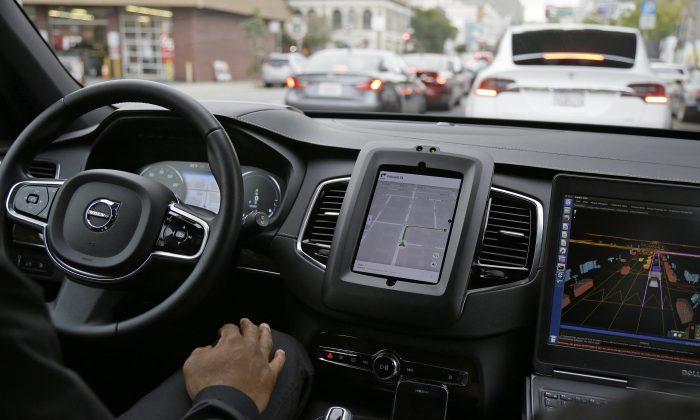A new AAA survey has found that American consumers remain skeptical when it comes to driverless vehicles, but would prefer better automatic performance features in existing models.
“You can’t sell consumers on the future if they don’t trust the present,” said Greg Brannon, director of AAA’s automotive engineering in a statement regarding the survey.
“And drivers tell us they expect their current driving-assistance technology to perform safely all the time. But unfortunately our testing demonstrates spotty performance is the norm rather than the exception.”
The survey found inconsistent performance is a crucial concern with available driving-assistance systems, resulting in crashes with a car and a bicyclist in tests.
Safety Test Troubles
The consumer survey took place between Jan. 13–16 using a probability-based model to represent the overall household population in the United States. The survey involved 1,107 interviews.Three rounds of testing by AAA’s automotive engineering team found that vehicles with an active Level 2 driving-assistance system failed to consistently avoid crashes with another car or bicycle during 15 test runs.
While a head-on collision occurred during all 15 test runs for an oncoming vehicle, only one test vehicle “significantly reduced speed before a crash on each run,” AAA said.
“For a slow lead vehicle moving in the same direction in the lane ahead, no collisions occurred among 15 test runs. For a cyclist crossing the travel lane of the test vehicle, a collision occurred for 5 out of 15 test runs, or 33 percent of the time.”
In the study, 77 percent responded they were more interested in better safety systems compared with self-driving cars (18 percent).
Consumers Wary of the Technology
The test results support AAA research calling for camera-integrated direct driver monitoring systems.“While it may be encouraging that these driving systems successfully spotted slow-moving cars and bicyclists in the same lane, the failure to spot a crossing bike rider or an oncoming vehicle is alarming,” Brannon said.
“A head-on crash is the deadliest kind, and these systems should be optimized for the situations where they can help the most.”
Since 2016, AAA has tracked consumer sentiment regarding driving-assistance systems and found that consumers are more interested in standard safety features, such as automatic emergency braking, but they distrust self-driving vehicle technology.
According to AAA, 85 percent report they are afraid of the technology or they aren’t sure it will work.
Long-Distance Success
“A troubling belief in commercially available self-driving cars was also revealed in the data, with 12 percent incorrectly thinking they could buy such a vehicle while 53 percent were unsure if they could. ”Despite these concerns, the push toward developing automated vehicle systems continues in high gear.
On Dec. 22, 2021, TuSimple Holdings announced that specially updated Class 8 semi-trucks completed a long-distance test drive without a human in the vehicle in Arizona.
The nearly two-hour run at night in Tucson covered more than 80 miles on public roads and main highways, including I-40, ending in Phoenix.
“Autonomous vehicles are a worldwide emerging technology, with much of the testing and commercial deployment taking place in Arizona,” according to the Arizona Department of Transportation.
Waymo is another technology company test driving fully autonomous vehicles in Arizona.





